Use the free audio guide to learn more at the various exhibits in the museum.
 Exhibition Room 1
Exhibition Room 1

 Exhibition Room 2
Exhibition Room 2

 Exhibition Room 3
Exhibition Room 3

 Exhibition Room 4
Exhibition Room 4

 Exhibition Room 5
Exhibition Room 5

 Exhibition Room 6
Exhibition Room 6

 Exhibition Room 7
Exhibition Room 7

 Exhibition Room 8
Exhibition Room 8

 Exhibition Room:
Exhibition Room:
Library of Human Evolution

Library of Human Evolution
 Exhibition Room 9
Exhibition Room 9

 Exhibition Room 10
Exhibition Room 10

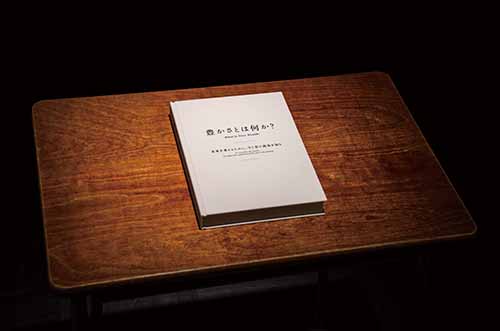
0-1
Introduction
Global environmental history is the history of relationships between humans and nature. This museum is a place to think about what the wealth of the future is, based on this history. To this day, we have pursued comfortable and convenient living, and we have built a wealthy society. At the same time, our lives are threatened by various global environmental risks caused by the swelling of human activity. Let us use this time to think. What would the enriched Shizuoka of the future look like?
“To enrich Shizuoka of 100 years from now”
The Museum of Natural and Environmental History, Shizuoka explores tomorrow’s form of true enrichment.
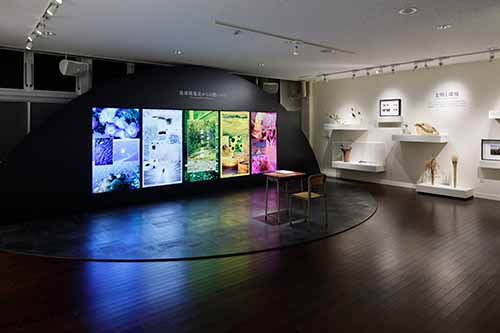
1-1
An Encounter with Global Environmental History
Planet Earth, as far as we know, is the only life-nurturing astronomical entity. Over 4.6 billion years, this planet has transformed itself into a beautiful habitat for many different kinds of organisms. Human beings, born after eons of biological evolution, have acquired the ability to pass down what they learned to subsequent generations and have also built civilizations that have modified nature. While some civilizations have vanished because of climate change or the exhaustion of resources, some continue to this day. Why have some civilizations perished while others have survived? In environmental history, we study the little remaining evidence to unravel the history of humankind and the environment. Then, we use what we have learned to think about the future of humankind.
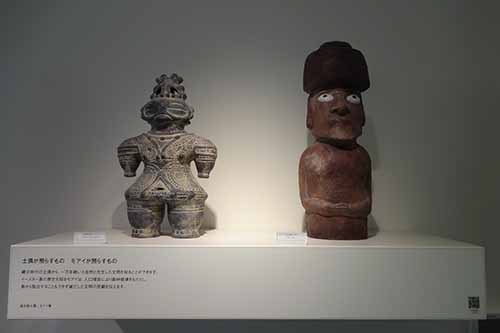
1-2
Different Things Illuminated by the Dogūs and the Moais
From the dogūs of the Jōmon period, we can learn about a civilization of coexistence with nature that lasted 10,000 years. The moais that know the history of Easter Island tell us about a tragedy of a culture that vanished when the island’s inhabitants were unable to leave the island even as their overpopulation destroyed the forests on the island.
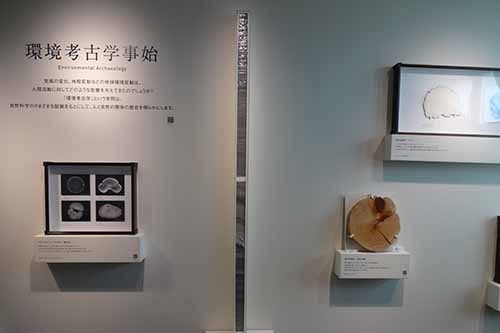
1-3
Varves: The Recording Instruments at the Bottom of the Lake
Sometimes, we can see “barcode-like” stripes in strata at the bottom of a lake. These are called “varves.” A few-millimeter-thick stratum of this sediments annually. By examining the varves, we can learn about natural environments of the past or the histories of disasters accurately.
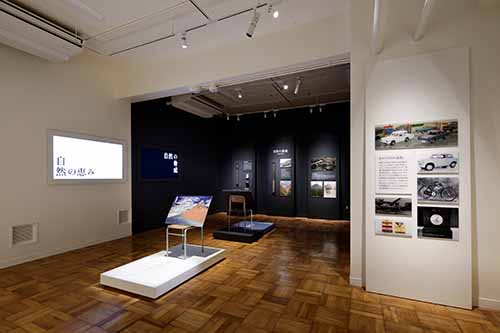
2-1
Nature in Shizuoka: Friend and Foe
Nature is sometimes menacing. Typhoons and torrential rains occur almost every year, and we are sometimes forced into despair and panic by the Earth’s movements such as when earthquakes, tsunamis, and volcanic eruptions occur. However, heavy rains and geological transformations have formed the complex terrains of today’s Shizuoka, and we derive a wide variety of natural benefits from these environments. Nature is indispensable to both the local cultures and the economy that is supported by the agricultural, forestry, and fishing industries. In the forms of either threats or blessings, nature’s various phenomena and products deeply influence our everyday lives.

2-2
Threats of Heat
Shizuoka is located where three tectonic plates collide. Eruptions occur when magma accumulates in the Earth’s interior and releases heat. A belt of active volcanoes line the route from Mt. Fuji to the Izu Peninsula. When there is an eruption, various volcanic ejecta from fine ashes to lava can cause disasters.
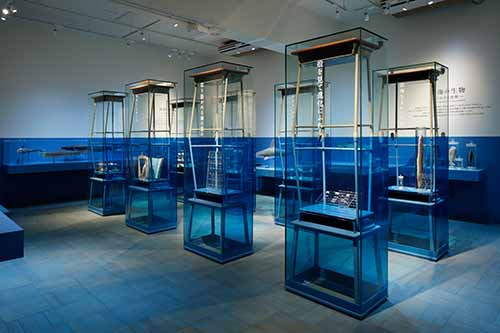
3-1
Marine Ecosystems in Shizuoka
With a coastline of approximately 506 km, Shizuoka has a variety of coastal environments. Suruga Bay, which extends on the western side of the Izu Peninsula, reaches about 2,500 meters deep. It is the deepest bay in Japan. Seasonal changes in the Kuroshio Current running offshore have a large impact on ecosystems. There is a complex and diverse environment under the surface that is home to a large variety of marine life. Shizuoka’s flourishing fishing industry has the largest number of catches of many sea animals in Japan including the splendid alfonsino and Sakura shrimp. Ancient remains such as shell mounds show us that the sea of Shizuoka has been a rich resource of seafood since prehistoric times.
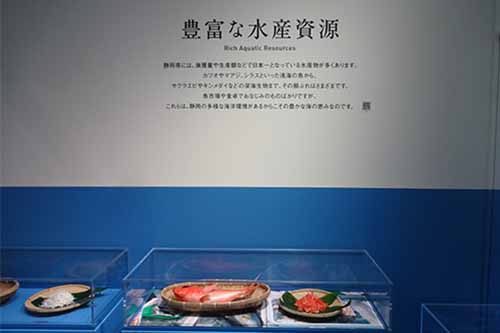
3-2
Rich Aquatic Resources
Shizuoka has the largest volume of catches and production values of many aquatic resources in Japan. From shallow-water fish, such as skipjack tuna, Japanese horse mackerel, and whitebait, to deep-water stock such as Sakura shrimp and splendid alfonsino, there is a large variety. These are all familiar foods to Japanese fish markets and households, but it is only because Shizuoka has such diverse marine environments that we are able to have plenty of them.
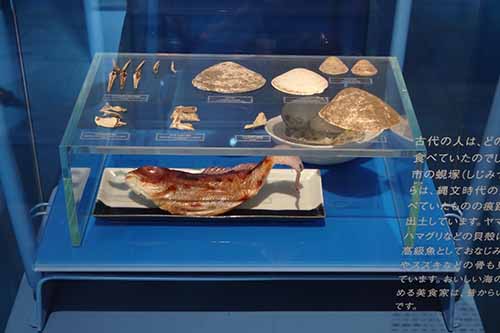
3-3
Jōmon Gourmet
What sorts of food did the ancient people eat? Numerous traces of foods eaten by people of the Jōmon period have been unearthed from the Shijimi-zuka shellmound in Hamamatsu city. Mixed with the shells of Japanese basket clams and hamaguri clams were bones of fish that are sold at high prices today such as red seabreams and Japanese sea basses. Apparently, epicures were after delicious seafood since ages ago.
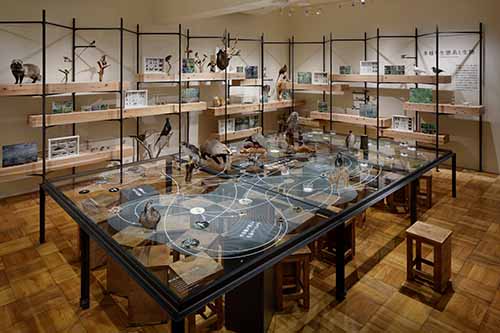
4-1
Terrestrial Ecosystems in Shizuoka
Shizuoka's complex terrains, varying geological properties, and altitudinal differences from east to west have produced a large variety of ecosystems on the land. Among these, the satoyama are natural environments formed through human development and management and humans have had good relationships with nature in these places. Organisms are connected in the food web of “eating and being eaten,” and many organisms are also involved in the process of the decomposition of dead organisms. Human life is also sustained by benefits from rich biological diversity. These benefits are called “ecological services,” and their significance has been gaining attention in the recent years.
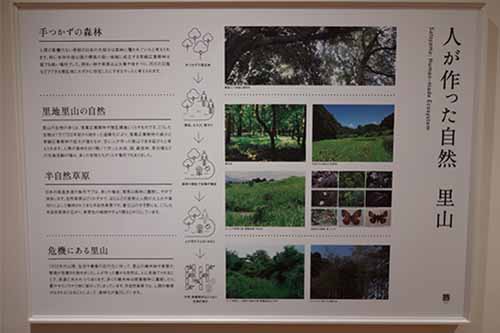
4-2
Satoyama Nature
Many species living in human-influenced natural environments, so-called “satoyama”, originally lived in deciduous broadleaved forests or environments formed by ecological disturbances. It is believed that amid the decline of deciduous broadleaf forests and the expansion of evergreen broadleaf forests that began 11,700 years ago as the climate became warmer, these organisms survived mainly in human-made natural environments. Thus, rice paddies, fields, fuelwood forests, hay meadows, and such sites of agricultural production that humans developed in place of virgin forests have also become home to many other species.

4-3
Endangerment of the Satoyama
Since the 1950s, as humans modernized agriculture and their ways of living, they began to neglect the satoyama forests and semi-natural grasslands. The wealth of human-influenced nature is disappearing quickly because humans are deserting it. Many satoyama forests are now turning into laurel forests, thickets, or moso bamboo forests. Semi-natural grasslands are also turning into forests because humans have stopped maintaining them.

5-1
Environmental History in Shizuoka
The climate has changed since the Paleolithic period when people began living in Shizuoka. The terrains and vegetation have changed as well. From the excavated ruins, we can learn what people’s lives were like ages ago. From the shell mounds and the ancient structural remains of paddy fields, we can see how people of the Jōmon and the Yayoi periods interacted with nature. Up until the Edo period, people lived in Shizuoka with lumber as their main resource. However, the natural environment has been changing since the advent of modernization, when people began using coal and oil, the economy grew rapidly, and the population increased. What is the ideal balance between humans and nature?
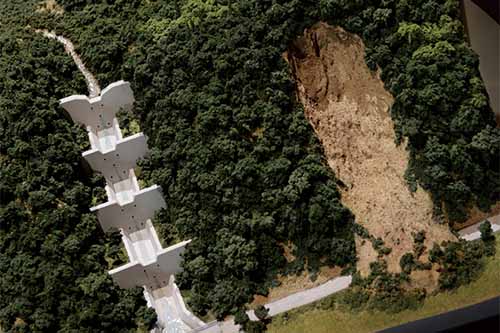
5-2
Human life and the forest
From the Jōmon Period on through to the present, what people have depended on such as the bounty of nature, rice, lumber, and underground resources have changed with each era. It is a given that what people have depended on has had a big impact on the natural environment. At first, the forest was untouched by humans and overgrown. In time it became part of human life and finally was exploited as a resource. This is our forest in the modern world: a completely altered environment. Because of the impact of human activities, the appearance of the forest has changed. In this room called “The Environmental history of Shizuoka,” we ask you to reconsider history up to the present and think about the desired balance between humans and nature.
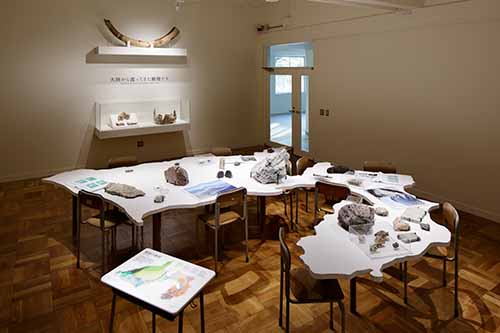
6-1
Geological History of Shizuoka
Shizuoka has a wide variety of terrains. The Japan Median Tectonic Line and the Itoigawa-Shizuoka Tectonic Line that divide Japan’s entire bedrock; Japan’s highest mountain, Mt. Fuji; and the Southern Alps, which were formed by the upheaval of a deep seabed approximately 100 million years ago, are terrains that represent Japan. The Izu Peninsula first formed out on the sea as a volcano before colliding into Honshū. Shizuoka has a variety of terrains that could differ by over 6,000 meters in altitude in relation to Suruga Bay. How were these terrains formed? Rocks, minerals, and fossils illustrate Shizuoka’s formation since the early ages.
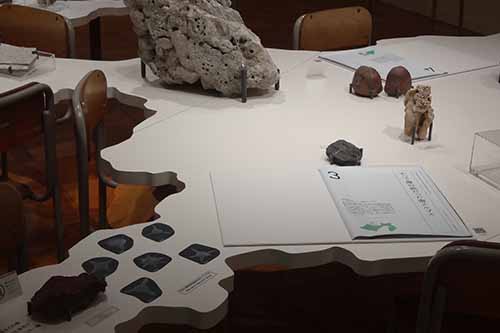
6-2
The Southern Alps, a Former Seabed
The Southern Alps is a mountain range that is part of the Akaishi Mountains bordering Shizuoka, Nagano, and Yamanashi. Its altitude exceeds 3,000 m. It attained its present form through a fast uplift that began about a million years ago. An annual uplift of about 4 mm continues today. The Southern Alps’ geology is composed mainly of metamorphic rocks and accretionary prism deposits that are newer than about 100 million years ago. This indicates that the terrain was formed by oceanic plate subduction and that it used to be under the sea.
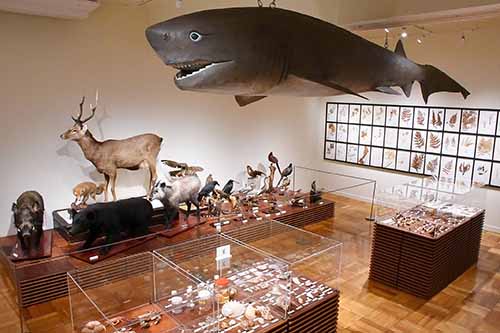
7-1
Biodiversity in Shizuoka
Shizuoka's rich variety of natural environments is home to many kinds of species. Over 4,000 species of vascular plants have been recorded. This is the largest number of all prefectures in Japan. About 60 species of mammals, about 400 species of birds, about 20 species each of reptiles and amphibians, about 190 species of freshwater fish, and over 1,600 species of saltwater fish are known to live here. The level of insect diversity is high, but much remains unknown. It is believed that many new species and unregistered species are to be found in the future. With environments ranging from the alpine zone to deep waters, Shizuoka has a great wealth of biological diversity.
As of 2020, this museum’s collection has 900,000 specimens of natural history and its stores are growing. With each specimen, you can learn about how organisms live in an ecosystem and about extinct species. These specimens are precious resources that tell us every living thing has its own unique history.
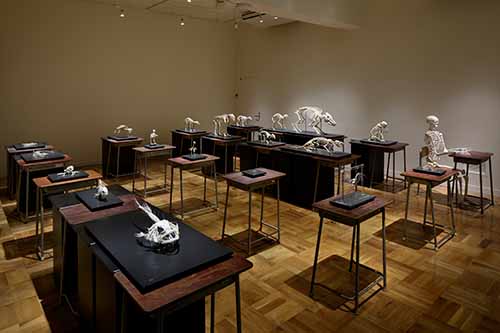
8-1
Function and Structure in Living Things
The museum collects the remains of various animals. The collected remains are dissected, recorded as data, and turned to bones. The disjointed bones are carefully built together again, to be reborn as complex yet beautiful skeletal specimens. Vertebrates share the same characteristic of having vertebrae. While some characteristics remain shared among animals as they evolve into different species, some characteristics are independently acquired and specific to a certain species. Please have a look at the design of bones that survived in nature through a long process of evolution.
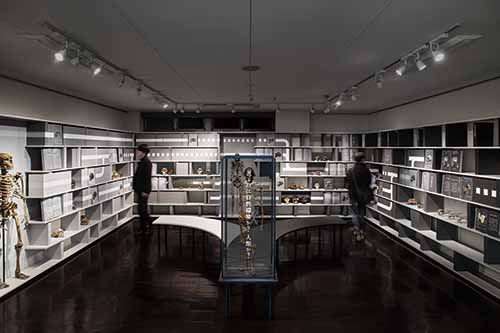
L-1
How humans became what they are
Humans, from their origins 7 million years ago, have undergone many changes. They have created useful tools. In some cases, several species of humans have coexisted together, and in other cases, the struggle for survival has led to reduction in population. Hereafter, as the environment changes, we are at a crossroads as to which path we should take moving forward. Here, fragments of the fossil record have been pieced together and in those fragments knowledge of human evolution has been stored away. With our awareness on the nature of humankind, let us think about the ideal way to connect humans of the present to the future.
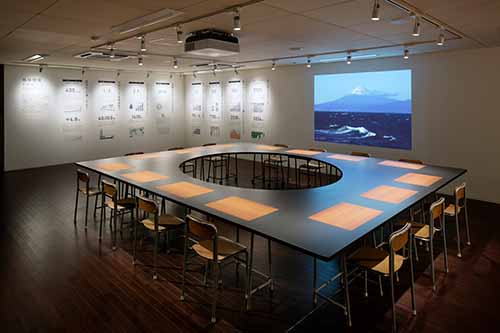
9-1
The Global Environment and Shizuoka
The history of humankind is but a small fraction of the history of the Earth that spans approximately 4.6 billion years. Humans, by developing knowledge and technology, have consumed a lot of resources and energy to follow their materialistic desires and to pursue ease-of-access to all things. Today, human activity is becoming a heavy burden on the global environment. Humankind suffers an "environmental dilemma" of knowing that prioritizing human activity would ruin the environment and yet prioritizing the environment would require limits to be placed on human activity. How should people living in Shizuoka work out ways with nature to enrich their lifestyles?
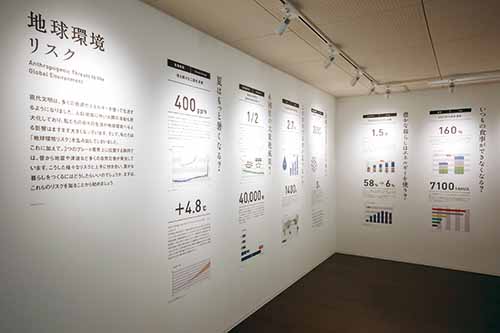
9-2
Anthropogenic Threats to the Global Environment
In today’s civilization, humans have become used to living while using a lot of resources and energy. Human activities have increased as a result of the growth of the population, and the impact of our everyday lives on the global environment is becoming larger every day. We have created what are called anthropogenic threats to the global environment. Those are Climate Change, Biodiversity, Water, Metal Resources, Energy, Food and Population. Meanwhile, many natural disasters, such as earthquakes and tsunamis, have occurred for a long time now in Shizuoka, as it is located on the border of three tectonic plates. What can we do to deal with these threats while still enriching our lives? To answer this question, let us begin by understanding these threats.
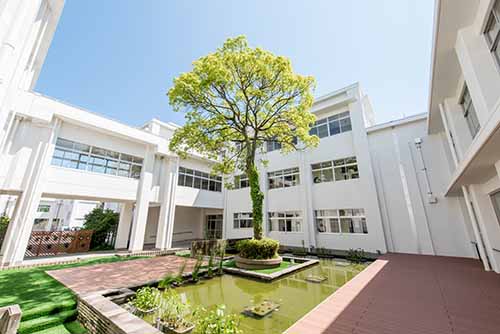
10-1
Camphor tree in courtyard
Water striders and larvae of dragonflies live in the pond located in the courtyard that you can see from the window. In the middle, there is one camphor tree. Birds come there to eat seeds and peck at the seeds which fall to the ground. Just by looking at that tree and the water environs, one can see various living things and the workings of life. What should we do in order to continue a bountiful life? First, observe nature around you. Then perhaps you will see the abnormalities brought on by things like climate change. Then, work on what you can do in your daily life. The future of our natural environment depends on the choices that we make as individuals.
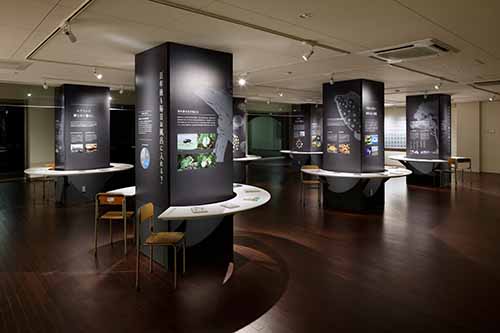
10-2
A New Way of Life in Shizuoka
What can we do to curb the swell of human activities and live with inner wealth? The clue lies in nature, history, and the community. Nature-technology is a revolutionary area of technology that propels the development of a sustainable society by wisely harnessing the astonishing features of organisms that have survived the long history of evolution. We can also design new ways of living by learning from how people lived before us as well as by valuing the community. Let us think about what each of us can do for Shizuoka to make it a good living environment a hundred years from now.


